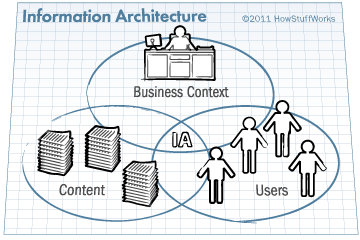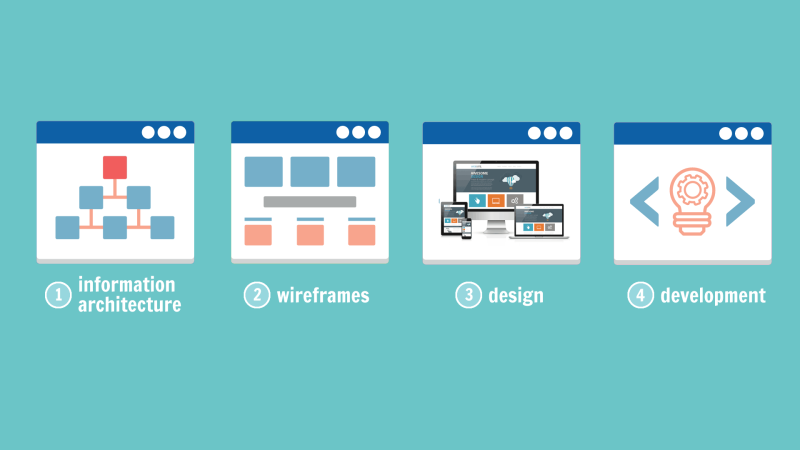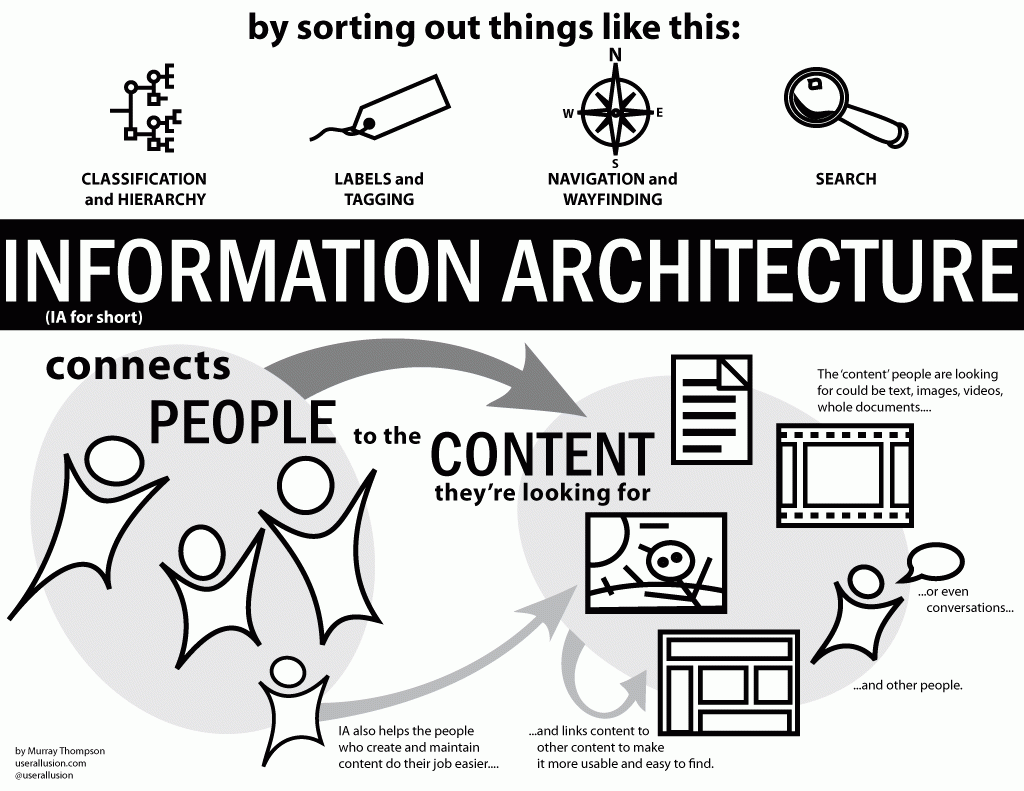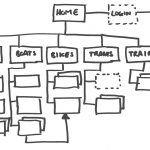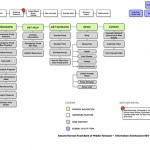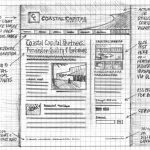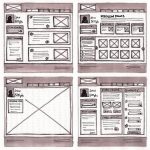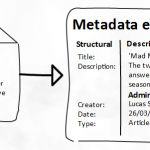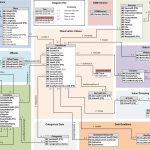“Information architecture is the creation of a structure for a website, application, or other project, that allows us to understand where we are as users, and where the information we want is in relation to our position. Information architecture results in the creation of site maps, hierarchies, categorizations, navigation, and metadata. When a content strategist begins separating content and dividing it into categories, she is practicing information architecture. When a designer sketches a top level menu to help users understand where they are on a site, he is also practicing information architecture.”
Common Methodologies
- Library Science: The study of how to categorize, catalogue, and locate resources.
- Cognitive Psychology
- Cognitive load is the amount of information that a person can process at any given time. Keeping in mind the user’s cognitive load helps prevent information architects from inadvertently overloading a user with too much information all at once.
- Mental models are the assumptions people carry in their minds before interacting with a website or application. Information is easier to discover when it is in a place that matches the user’s mental model of where it should be.
- Decision making may not sound like psychology, but it is! It’s a cognitive process that allows us to make a choice or select an option. Information architects can help us make decisions by providing certain information at key moments.
- Architecture: Much like architecture, information architecture can take many attractive forms, and is based on a precise, intentional structure and solid foundation of ideas, though IA features in everything from libraries to websites.
Daily Tasks and Deliverables
- User Research and Analysis
- Navigation and Hierarchy Creation | Site Map
- Wireframing
- Labeling
- Taxonomies and Metadata
- Data Modeling
- User Research and Analysis
How a prospective user would categorize a variety of terms. Through this research, information architects are able to learn what people will do with an application, how people will use information provided by the application, and what mental models the users have when they use the application.After conducting this research, an IA will begin to analyze the data. They may present the information to the rest of the team as a spreadsheet or a set of recommendations, or even as a set of user personas that will showcase who the typical user is, what their goals are, and how they might approach the application.
- Navigation and Hierarchy Creation | Site Map
Determine how information across a website or application is displayed and accessed. In order to create this hierarchy, the IA needs to consider what the user expects to see, as well as what content the organization wants to connect.
For example, if an organization wants users to associate their FAQ with their Help page, they might put both under the Support section. However, they might have determined during research that users expect an FAQ to live under a Product section. This is a decision the IA needs to make. There are benefits to both, and the IA may also be able to consider alternatives that will achieve both goals, such as putting both the FAQ and the Help page under the Product section. Ultimately, it’s these sorts of decisions that create the structure for the rest of the site or application. The deliverable that is most commonly associated with this work is a site map, which illustrates the hierarchy of content across a website.
Is the sketch out certain key screens in order to demonstrate how a user will interact with the information available.This is particularly likely to happen when the designer is the one responsible for doing the information architecture work. Since designers tend to think visually, it makes sense for the designer to use wireframes to demonstrate the hierarchy of information. Wireframes are also a valuable deliverable to share with clients, and for developers and visual designers to reference as they build mockups, prototypes, and final products.
- Labeling
Labeling, or what we call pages and links on a site, ensures that our navigation and hierarchy is appropriately titled, which plays a large role in whether users will be able to find that information. Here is where understanding Semiotics plays a big role. The more you know how people interpret what you are representing the easier will be for them to navigate the site.

- Taxonomies and Metadata
A taxonomy is a set of things that are grouped together. For an information architect, taxonomies are also records of how we group similar types of content or pieces of information. Most IAs will choose one or more appropriate taxonomies for a website or app based on the mental model of their target audience. They may then “tag” content with metadata, so that users can search for content based on the assumed taxonomies. For example, a clothing store might consider multiple taxonomies: one based on fabric type, another based on clothing item, and another based on color. The information architect would tag a shirt with cotton, or nylon as well as shirt or top and red. That way, a shopper with the mental model “I need a new shirt” could easily find this red, cotton shirt.
- Data Modeling
Also referred to as content modeling, this work may be shared with a content strategist. Data modeling pairs an IA with developers in order to determine structured content types that represent user needs, business logic and requirements, and internal editorial practices. In the case of website redesigns, new data models will often need to be mapped to existing structures in order to assure a smooth content migration. This kind of work is often done in spreadsheets, mapping out field types and relationship requirements, but it is sometimes implemented directly into a CMS. Data modeling can also result in the creation of documented content types, or content templates, for content strategists or copywriters to use as they create content.
Marketing and Advertising: web design, web information architecture, usability testing from David Engelby
References:
- Complete Beginner’s Guide to Information Architecture
- IA Basics
- How Information Architecture Works
- IA: Wikipedia
